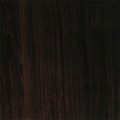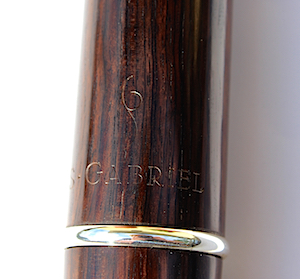Materials
For building my flutes, I use tropical hardwoods from different parts of the world, sourced from sustainable plantings. None of these timbers is under protection, and I pay greatest attention on only buying timber from traceable sources.
Regarding the material's influence on tone, I have a clear opinion on this: the influence is very, very minor. After all it's the vibrating air inside the flute that makes the sound, not the flute's body. And the factors that determine this vibrations are shape (i.e. style of embouchure hole, bore, tone holes etc.) and the player, not the material, as long as it is hard and dense.
The flute's tone in general is first and foremost created by the player - the exact same flute will sound totally different in two player's hands. After that, the shape follows. And finally, if there is a difference between different materials and if a scientific method is going to be developed in future to measure those differences, they still will be very minor. So, after all, the choice of material should mainly be a matter of looks and personal liking.
Timbers
African Blackwood
Dalbergia melanoxylon, mpingo

A member of the rosewood family. Its appearance is black, often with brown stripes. Sunlight and regular oiling will soon render it pitch black. It comes from western Africa. Blackwood is extremely hard and dense and contains a lot of oil, making it water-resistant by nature and thus rendering it the ideal timber for woodwind instruments. It doesn't need much oiling.
From January 2017, african blackwood is listed in appendix II of the CITES treaty. This ensures special protection for the timber. My blackwood stocks are properly registered with the local CITES authority, and every flute made from african blackwood comes with a certificate to affirm the legal origin of the material used, which, together with the original invoice, also makes a future resale of the instrument possible. However, due to the high time and effort necessary for the bureaucratic background, flutes made from african blackwood unfortunately cost 20 euros more than those made from other timbers. For information about CITES, the listing of blackwood and its impact on you as an instrument owner, please click here.
Mopane
Colophospermum mopane

Mopane is a still relatively seldom used substitute for blackwood, and has very similar properties, and so far it hasn't been reported to cause contact allergy, what the rosewoods do on some people. It starts with a dramatic light brown and darkens to a deep blood red/brown with time. It needs a bit more oil than blackwood. It comes from Africa and is used as firewood in its native countries. Tonewood qualities are rather expensive, though.
Olive
Olea europea

Olive wood comes from Europe, as opposed to the other available hardwoods. It is quite light, but still dense and contains natural oil, making it ideal for a light and slim flute. It also has a nice smell to it and a very dramatic grain. It is a bit softer than boxwood, but has the same feel to it. Tone-wise, I can't hear any difference to a flute made from tropical hardwoods. It is a very good alternative for eco-sensible people and players who seek for a very light flute (about 15% less weight than a flute made from blackwood).
My supplies of olive wood are currently rather limited, as some of the wood isn't dry enough to be processed yet. Please ask for a estimate as to how long a flute made from olive wood will need to be finished.
Tenons, Rings and Tuning Slides

The tenon lappings are generally made from cork, which has proven to be more user-friendly than thread lappings.
The inner tuning slide is made from brass, the outer tuning slide is made from brass on budget flutes and nickel silver on the traditional model. It can also be made from sterling silver for a considerable premium.
The rings on budget flutes are made from brass tubing. For my traditional model, I use sterling silver. The rings are hand-forged in the traditional style and have the classic D profile seen on many vintage flutes. If desired, I can supply rings in artifical ivory. I do not work in real ivory, antler or horn.

